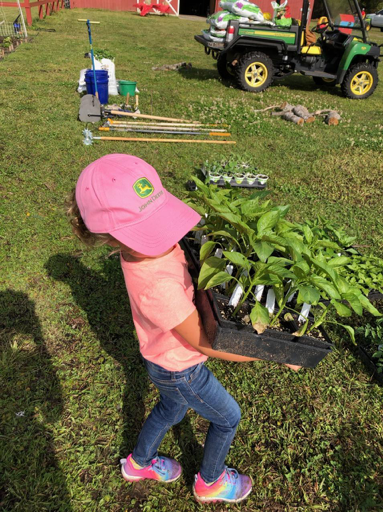A little over a year ago I traded in my high-tech, high-growth career as a software company founder and CEO for the unknown and wide open world of early retirement. Over a relaxed dinner date at an ocean pier bar in Daytona Beach Shores, Florida, I asked my wife what she thought we should do next. Her answer was immediate, “Let’s start a family farm!”
“Let’s do it!” I replied, not having a clue what that would look like. But it sounded interesting enough and different enough from what I had been doing, or rather “not doing” in early retirement. When I made the transition from full-time, full-speed, technology work to a total quiet and calm nothing-on-my-schedule lifestyle, I was not bored. I was not itching to fill back up my schedule. However the idea of doing something outside in nature, something analog, something completely new and different really appealed to me.
We took that simple conversation and did what any modern novices do when they begin an exploration for new knowledge: We went online and watched documentaries! Farming documentaries, that is. Dairy farms, organic farms, commercial farms, and of course the many food-related documentaries.
The farm idea sprang from three primary desires:
- to produce clean, healthy, local food,
- to use food to heal and maintain our bodies,
- and to create a setting for our kids to learn hard work and the wonders of nature.
The healing desire came from a few episodes of peripheral neuropathy that I have encountered over the last eight or so years. In the midst of my fast-paced and stressful career, I did what many of us do, I ate whatever was easiest and fastest so that I could continue my work the quickest. The combination of poor diet, lack of nutrients, and stress resulted in a slow-burn autoimmune disease, which in my case created edema or inflammation around the ends of my nerves. This resulted in severe cramping in my legs and feet and a growing constant pain.
I was essentially choking off the blood flow to my nerve endings and it was dreadful. I powered through it while we searched for medical answers over a three-year period. The punch line was that the only medicine and treatment that lead to any lasting relief and actual healing came from food. Specifically from fresh, healthy, organic fruits and vegetables.
So with a working knowledge of how important fruits and vegetables are to our family’s health, we had the seeds of a desire to learn more about our food and, if possible, get connected to the actual land it is grown from.
Finding the Land
When we returned to Charleston from that momentous evening on the Daytona pier, I went to work searching for some land. I knew there were several farms to the south of Charleston, but I had no idea where or who owned them. I hadn’t even been to our local farmers market. I began to drive around the country roads in our area taking mental notes of what I saw.
We began to visit several local farmers markets and met our community farmers. We researched where the produce in our grocery stores originated. We told friends about our family farm idea and heard that many of them had similar desires. It seemed that a lot of people have medical issues that can be traced back to their diets, and parents wanted their kids to be closer to nature.
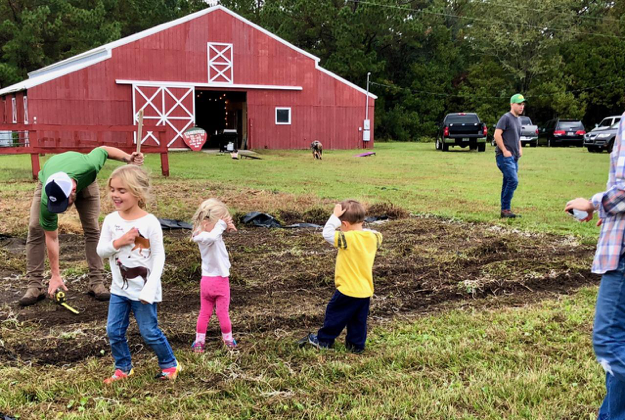
My land search lead me to a couple farm opportunities. I found a few places that were in the 10- to 20-acre size range. I also found a couple established horse farms with beautiful barns. And then I found one large, 275-acre dormant former strawberry farm.
As an entrepreneur I couldn’t help but think of the farm as a startup business. While our main objective was not creating a new profitable business, it just seemed natural to build something that would be self-sustaining.
A friend of mine has a simple investment framework that includes two principles: 1) be profitable and 2) have fun. And he quickly adds that if he is losing money on something, then it eventually stops being fun. So I had that in the back of my mind as we developed our farm concept.
My plan developed to have at least 100 acres so we could create an operation that would support a full-time farmer and some staff, allowing us some flexibility on how much we did on the farm. More importantly, we needed farming experience on the team and a big enough opportunity to attract passionate people.
When starting a new product or entering a new business, I try to see how the new venture will become self-sustaining for a decent size group of people to operate. I enjoy starting things, taking on new risks, and helping create teams that can grow and flourish without my full-time involvement. So I looked at the farm through that lense. How could we start a farm that would meet our three main objectives that only required a small team of people to sustain?
After about six months of research we negotiated a contract on the 275-acre former strawberry farm in McClellanville, SC. We included a four-month due diligence period so that we could study the soil, understand the topography and any wetlands, and inspect the two houses and barn on the property. This also gave us time to meet people who had been involved with the farm when it was actively growing strawberries.

As we discussed our family farm ideas with friends, we met a family who had a similar desire and who had also farmed a few pieces of land in the area. The Davis family agreed to join our quest and will be living on the farm full time when our house renovations are completed later this year. We named the farm Silo Farms, and you can follow the activity on Instagram @silo_farms.
The Startup Phase
We closed on the land in November of last year (2018) and have been working on infrastructure projects like clearing drainage ditches, expanding ponds, updating irrigation, preparing fields, planting an orchard, and laying out the vision for the farm operations.
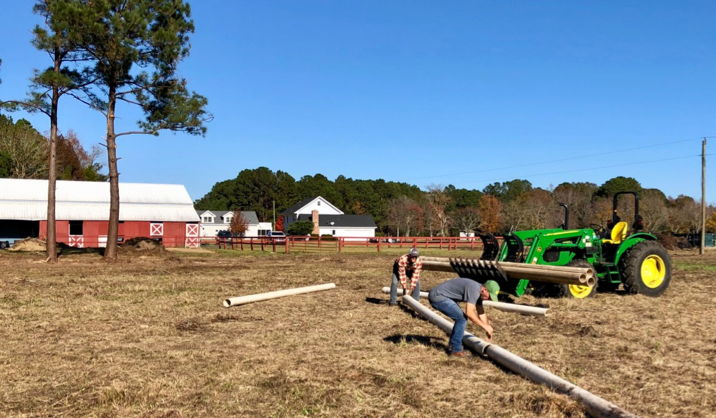
One of the funnest projects so far has been researching and buying a tractor! We ended up with a John Deere 5075E and associated implements. It’s a blast to operate and so far seems like the perfect machine for a farm our size. We also purchased a few used John Deere mowers from the previous owner.
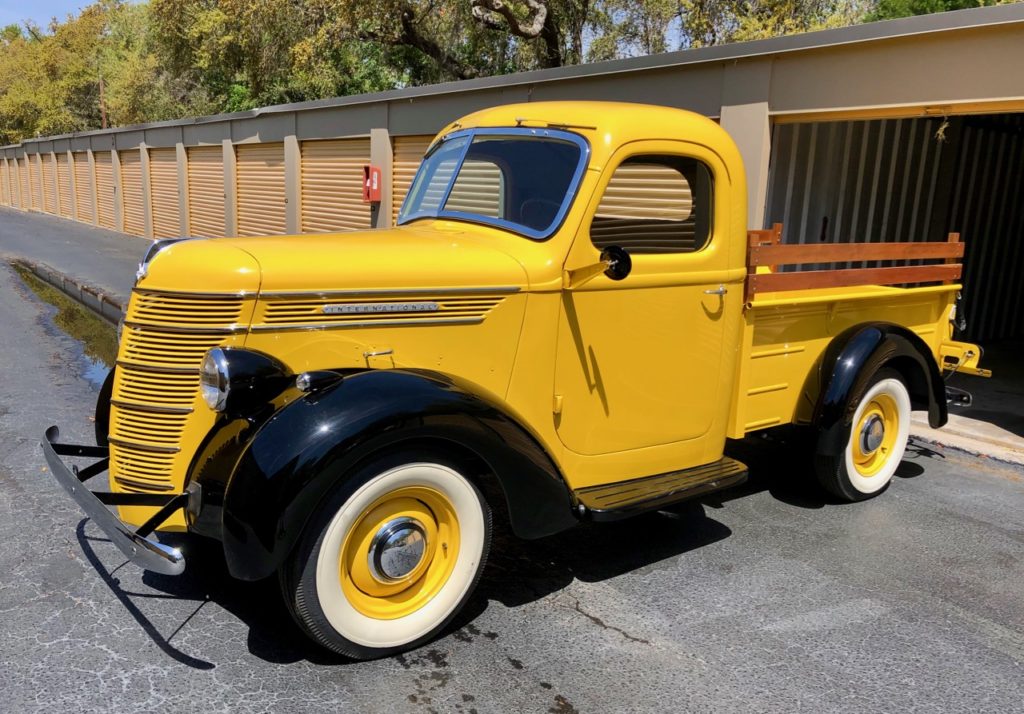
One bonus has been this 1941 International Harvester truck that I bought as artwork for one of our buildings at my software company. I had this concept of “Develop Your Field” for sales associates. We created some classes and content on how a sales person can develop their “field” or sales territory over time and see it yield multiple harvests. The IH truck served as a big bright reminder to people that we are all developing ourselves and our fields of opportunity. We now have that truck on our farm and I can’t wait to see it brought to life. It’s fascinating to me to see things that began in my software career cross over into our new adventures in early retirement.
We planted our first small “family garden” in January of this year and have already been enjoying the healthy, local produce! It’s so fun to watch our kids run around the farm, dig in the dirt, harvest some vegetables, and ride the tractors.
Grand Aspirations
One key word for our farm is “biodiversity.” We plan to have a wide variety of fruits, vegetables, nuts, mushrooms, and livestock all working together to create a natural and sustainable ecosystem.
We plan to create a subscription offering for our produce and proteins. Our thesis is that there are probably a few thousand households in the local area that would love to have a healthy, fresh box of real food dropped off at their home each week. I learned how valuable recurring revenue is to a software business, and I think it may also apply to healthy food.
One big aspiration I have for the farm is for it to also help heal our environment. We plan to track all of the carbon emitted from the equipment and livestock and the offsetting carbon captured by our fields, vegetation, and forrest. Our goal is to capture more carbon than we emit, thus creating a farm that both helps heal bodies and helps heal the environment.
We are designing a large solar array to power most of the farm. We envision electric vans charged by the sun delivering fresh produce to our local area. Imagine sitting down to dinner and enjoying a colorful rich plate of local food that you know also has helped repair the earth! We will be working with a few firms to help us calculate the farm’s carbon inputs and outputs. Stay tuned for details about our progress on this grand initiative.
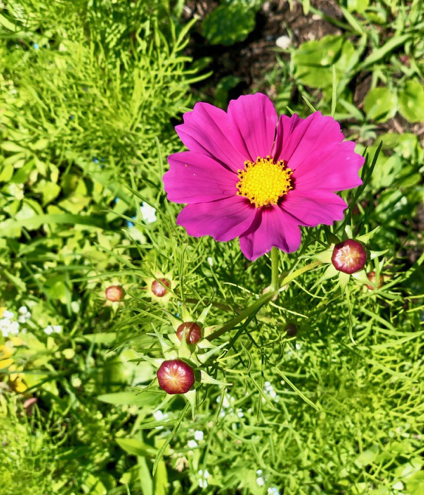
What We Don’t Know
Now, let me acknowledge up front that I am naive when it comes to farming. There is way more that I don’t know than I do know about the subject. However, I consider that an advantage. Industries are often enhanced (and sometimes totally disrupted) by the idealism of new entrants who really have no clue how hard things are. It takes a bit of childlike wonder to tackle new and grand things. We will certainly learn much in the coming years, but in the meantime we hope to feed our family and many families in our community, all while doing a little bit to heal the environment and create some good agriculture jobs.
The concept for my blog is that we can create platforms in our lives that serve us and our communities for good. Those platforms can be careers, businesses, community organizations, and in this instance—a farm!

